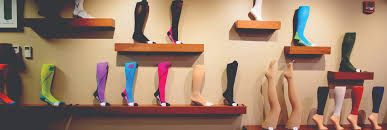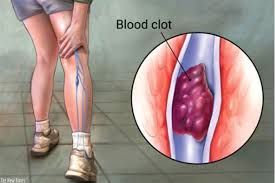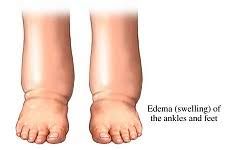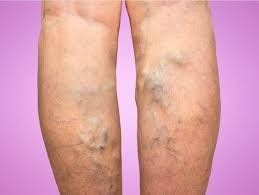Compression socks were first known for their medicinal purposes, not for other reasons such as sports and travelling which have recently become the focus of these helpful garments.
Medical grade compression stockings offer benefits for all genders, ages, and occupations and are at the forefront of reducing the risk of chronic venous disease and insufficiency problem developing in one’s lower extremities.
However, choosing the best medical pair is key to getting effective results.
If you are new to medical-grade compression socks and want to know how to choose them, continue reading!
What Medical Grade Compression Stockings Are

Medical-grade compression socks are specially designed for compression therapy.
Medical Socks are designed to improve blood circulation, reduce pain, wound management and swelling in the feet or legs, orthopedics for injuries and reduce the chances of circulatory issues, such as deep vein thrombosis, or dvt from occurring.
Adding these level of pressures can be good medicine.
People who wear compression socks tend to be more comfortable, can perform better in sports, and are at a lower risk of developing chronic medical diagnosis.
How Do These Work
Medical support socks are snug-fitting, stretchy socks that gently squeeze the feet and legs. A particular version of them offers most compression around the ankles with gradually lesser compression as it goes upwards towards the calves, knees, or thigh.
For blood to flow back to the heart, it has to work against gravity. If anything impedes the flow, it could pool in the veins of the feet or legs and cause aches, leg fatigue, and/or swelling, increasing the risk of a venous clot developing and having dvt or deep vein thrombosis.
This is why Graduated Compression stocking is quite literally the medical diagnosis after surgery. They’re called “TED Stockings” and they prevent blood clots by providing compression to superficial outer veins in the legs.
Types
There are two main types of medical-grade compression socks:
1. Graduated Compression Socks (also known as “Compression Socks” or “Medical Compression Stockings”)
2. Embolism Socks or compression stockings (also known as “TED Socks” or “TED Stockings”)
1. Graduated Compression Socks
Graduated compression socks offer the highest level of compression at the ankles and the compression decreases progressively towards the top of the legs, depending on the length of the socks.
With this graduated compression, the diameter of the distended veins will reduce and venous blood flows will increase.
These socks ensure valve effectiveness, reduce venous pressure, prevent venous stasis, prevent weakening of venous walls, and help relieve heavy and sore legs.
Compression or anti-embolism stocking (including all sizes from small stockings up to plus size compression stockings) help improve blood circulation from the legs to the heart to prevent conditions like tired, aching feet, calf cramps, and shin splints.
Graduated socks are sized for the person wearing them. There is no “one-size-fits-all” compression sock or anti-embolism compression stockings.
There are different features to choose from depending on personal preference, such as color, design, open toe or closed toe, and sheer fabric. However, the length has to be chosen according to medical specification.
For your knowledge, here are some medical specifications for each length of graduated socks:
- Knee-High Graduated Compression Socks: These socks (also called stocking) stop just below the knee. Their major function is to reduce leg swelling caused by fluid buildup in the lower leg. They also help to limit the effects of peripheral edema.
- Thigh High Compression Stockings (also Waist High): This pair of stocking is very good at reducing blood pooling in the legs and can also help to prevent orthostatic hypotension.
2. Anti-Embolism Socks (“Stockings“)
Anti-embolism socks are specially designed to meet the needs of people who are not mobile, especially if they have just had surgery.
Just like graduated socks, anti-embolism socks also provide gradient compression. However, they offer a different level of compression. The main goal of using anti-embolism socks is to help decrease the possibility of developing dvt or deep vein thrombosis.
Related Articles
- Compression Sleeves for Legs
- Sock Soothers
- Medical Compression Socks
- Compression Socks for Men
- Do Compression Socks Help Gout
- Best Compression Socks for Swelling
- Wide Calf Compression Socks
- Can You Wear Compression Stockings 24 Hours a Day
- Toeless Compression Socks
- Easy To Put On Compression Socks for Elderly
Compression Levels
Generally, anti-embolism medical socks or compression stockings are measured in millimetres of mercury (mmHg). Compression stockings are considered to be medical-grade when they are 20-30 mmHg and more. Anything below this is just moderate compression, which is recommended for exercise and everyday use to make you even healthy.
Pressure Levels for Medical Grade Compression Stockings

Class 2 – (20-30 mmHg compression)
The is the first medical-grade level.
These anti-embolism compression stockings are the most widely used medical-grade because it provides competent pressure to your legs without being too strong.
This level is suitable for individuals suffering from varicose veins, preventing dvt or deep vein thrombosis, patients recovering from venous surgery, and pregnant women.
This is the most common level and the one most people choose.
- Prevents and relieves moderate to severe cases of varicose veins.
- For post-surgical and post sclerotherapy treatment to help prevent the reappearance of varicose veins and spider veins.
- Helps in the treatment of moderate to severe edema or lymp edema.
- Helps with the management of active ulcer and manifestations of Post-Thrombotic Syndromes.
- Relieves superficial thrombophlebitis.
- Prevents Orthostatic Hypotension or Postural Hypotension.
- Prevents dvt or deep vein thrombosis.

Class 3 – (30-40 mmHg)
These anti-embolism compression stockings are a stronger medical grade class II that is recommended for moderate to severe leg symptoms. These can help in maintaining healthy lifestyle – especially for patients with lymphedema, severe varicose veins, venous reflux, and dvt or deep vein thrombosis.
- Prevents and relieves severe varicose veins and superficial thrombophlebitis.
- Used in post-surgical and post-sclerotherapy treatment to help prevent the reappearance of varicose veins and spider veins.
- Used in the treatment of severe edema and lymphedema.
- Helps reduce the symptoms of Orthostatic Hypotension or Post-Thrombotic Syndrome.
- Helps in the management of venous ulcers and manifestations of Post-Thrombotic Syndrome.
- Prevents dvt or deep vein thrombosis.

Class 4 – (40-50 mmHg)
These anti-embolism compression stockings are the strongest level and is not for ordinary use. Wearing these garments, including pantyhose, must be under the prescription and supervision of a doctor. This level is generally indicated for severe venous stasis, wound management, and lymphedema.
- Treats acute leg and ankle swelling.
- Prevents and relieves varicose veins, chronic vein insufficiency, and dvt or deep vein thrombosis.
Benefits of Wearing These
Benefits of Wearing Medical-Grade Compression Socks
- Help boost circulation in the legs.
- Reduce and prevent swelling in the legs and/or feet.
- Improve the level of lymphatic drainage.
- Help prevent venous ulcers.
- Support the veins.
- Prevents blood from pooling.
- Reverse venous hypertension.
- Prevent deep vein thrombosis from developing in your legs.
- Reduce the effects of orthostatic hypotension, such as unsteadiness and dizziness when standing.
- Help decrease the pain that is caused by varicose veins. Also, this is good with wound management and injuries in orthopedics.
Medical Diagnosis That Require A Person To Wear These
“TEDs are for Beds”
Medical-grade compression socks are typically prescribed for bedridden, post-surgery patients who are at risk of developing blood clots during recovery post-surgery.
Compression socks are usually prescribed by doctors to deal with several medical issues. Some of the more common conditions are seen below:

- Deep vein thrombosis (DVT): deep vein thrombosis is the formation of blood clot in the leg. This painful condition can become a very dangerous case of pulmonary embolism if the blood clot travels to the lungs. These socks help treat post-thrombotic syndrome and any other complications that may arise after a deep vein thrombosis. Apart from relieving the pain, wound, swelling, severe ulcerations, and skin changes that come with this syndrome, these also help ensure the condition does not worsen.

- Edema: Edema, also known as leg swelling, is caused by any condition that could make the body to retain fluids. Edema is mostly found in the legs because of the pressure from standing constantly. Although they may not treat the underlying condition, they will provide relieve from the painful symptoms that accompany it.

“An ounce of prevention is worth a pound of cure”
Some evidence shows it may be possible to prevent varicose veins with a good pair of medical compression stockings!
- Varicose veins: Varicose veins occur when there is poor circulation in the legs, symptoms of which are achy and tired legs. If left untreated, varicose veins can become ulcers and skin lesions. Using your knowledge with medical-grade will help to support the veins by squeezing them gently to restore good blood flow.
- They do not help to eliminate varicose veins, but help instead to relieve the discomforts the vein diseases may cause.
When and Where to Wear These
The time and place for wearing medical compression socks depends entirely on your medical condition.
Patients suffering from symptomatic vein illness may need to wear these anti-embolism compression stockings all day and only take them off to bathe.
They do not have to wear them when they are in bed, but they should put them on as they get out of bed.
Waiting until much later to put on the socks can cause the blood to pool in the lower extremities.
It is best to follow a doctor’s prescription when and for how long to wear medical-grade compression socks.
Who Should Use These
You can use medical-grade compression socks if you have a medical condition that requires them or in accordance with recommendation by medical professional or doctor.
Some experts recommend the following set of people to wear these type of socks:
- People who find it hard to leave their bed or cannot move their legs.
- People who have just gone through surgery.
- People who have or are at risk of having problems with blood circulation, such as dvt, diabetes, and varicose veins.
- People with leg ulcers.
- Pregnant women.
Who Should Avoid Wearing These
It is important to consult with your health care professional first before using compression socks, especially if you have a pre-existing medical condition.
Here are some categories of individuals who should avoid wearing medical-grade compression socks as these cannot help with them being healthy:
- People with medical conditions that affect skin sensation, for instance, peripheral neuropathy.
- People who have history of peripheral arterial bypass grafting.
- Those with peripheral artery disease.
- People with skin infections.
- Those who have dermatitis accompanied by discharge or fragile skin.
- People with pulmonary edema caused by congestive heart failure.
Each of the conditions mentioned above can be worsened or become critical by wearing medical-grade compression socks. People who have peripheral artery disease, for instance, could worsen the delivery of oxygen in their arteries if the socks impair blood flow. More so, for people with sensory problems, like peripheral neuropathy, these pair may impede circulation because they will not know if the socks are too tight. There are also some skin infections or conditions that wearing socks may worsen by simply covering or pressing on the affected area.
Styles
Manufacturers of medical-grade compression socks have revolutionized the market with different designs and styles to choose from. The essence of making different styles of medical socks is to help with different medical conditions, purposes, and people.
Some of the common styles are:
- Open-toe compression socks
- Closed-toe compression socks
- Compression Sleeves
- Ankle-high compression socks
- Knee-high compression socks
- Thigh-high compression socks
- Waist-high compression socks
- Panty hose compression socks
- Maternity panty hose compression socks
- Unisex compression socks
Proper Sizing
Medical-grade compression socks, as the name implies, are medical products that should not be worn carelessly.
The one thing that must considered carefully when you are buying your compression socks is the size.
You have to take your shoe size measurement, and the measurement of your calf circumference if you are intending on purchasing knee-length socks. Most manufacturers provide a size chart with both calf and shoe size measurements to help you get the right size for your legs.
An inappropriate size may cause ineffective results from the compression. Wearing compression socks that are too tight will most likely cause more harm than good because blood circulation will not be possible, as they can exert too much pressure on the skin and become very uncomfortable with movement. On the other hand, over-sized medical compression socks will not stay upright and may occasionally fall to the ankles.
Tips for Putting These On
These tips can help you easily put on medical socks and get the best from them:
- Put on your medical compression stockings first thing every morning.
- If your legs are wet, apply talcum powder or cornstarch to them first.
- Read the washing instructions that come with your compression socks.
- When you wear your socks, make sure there are no wrinkles on them.
- Do not cut your socks or alter them.
- Do not fold or roll down your socks.
- If you find it hard to wear your socks all day, try wearing them for a couple of hours every day. Then increase the time you wear them everyday until you get very used to wearing them more often.
- Take off your socks if you notice numbness, tingling, pain, or discoloration on your toes, feet, ankles, or legs.
Factors That Determine the Prices
All socks are not made equal; there is a wide variety with different price tags. The prices could range from $10 to over $100. Therefore, why is one pair quite low-cost but another expensive?
Prices for compression socks vary based on a couple of factors, such as:
- The brand.
- Quality of fabric (this has to do with the smoothness breathability, ability to wick moisture away, softness, etc.).
- Is it a custom fit, sheer, or opaque?
- Toe design (i.e. open-toed or closed-toed),
- Length.
- Strength of compression.
- Types of material used (e.g. latex, cotton, nylon, etc.).
Conclusion
In a nutshell, medical-grade compression socks are worth having to achieve a healthy lifestyle. Ensure that you consult with your healthcare provider if you have any medical issue that you think these pair can help.
